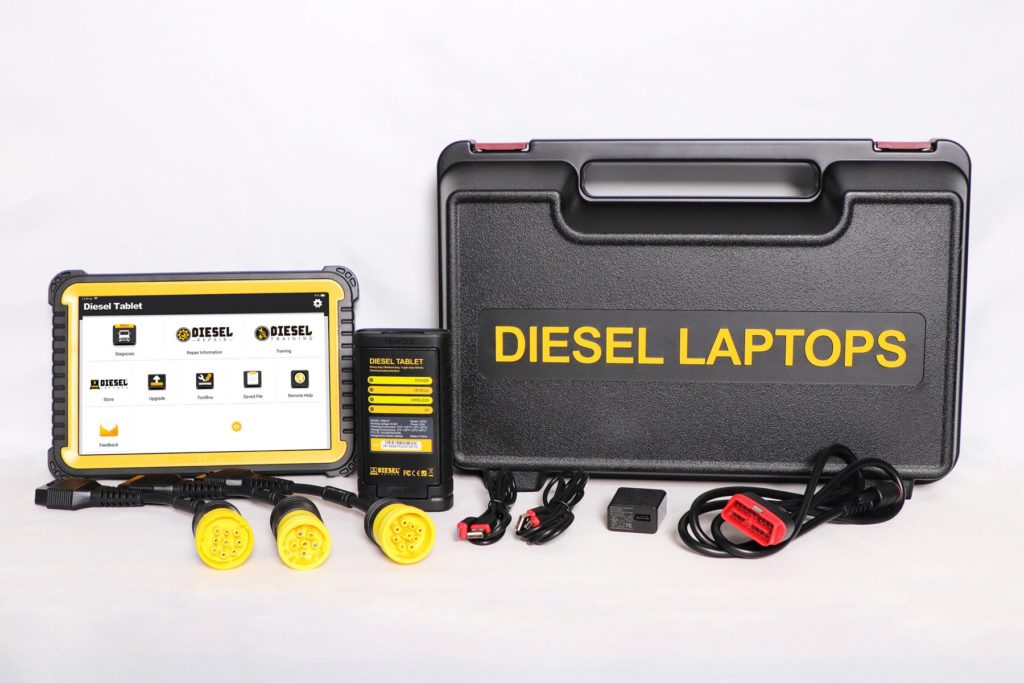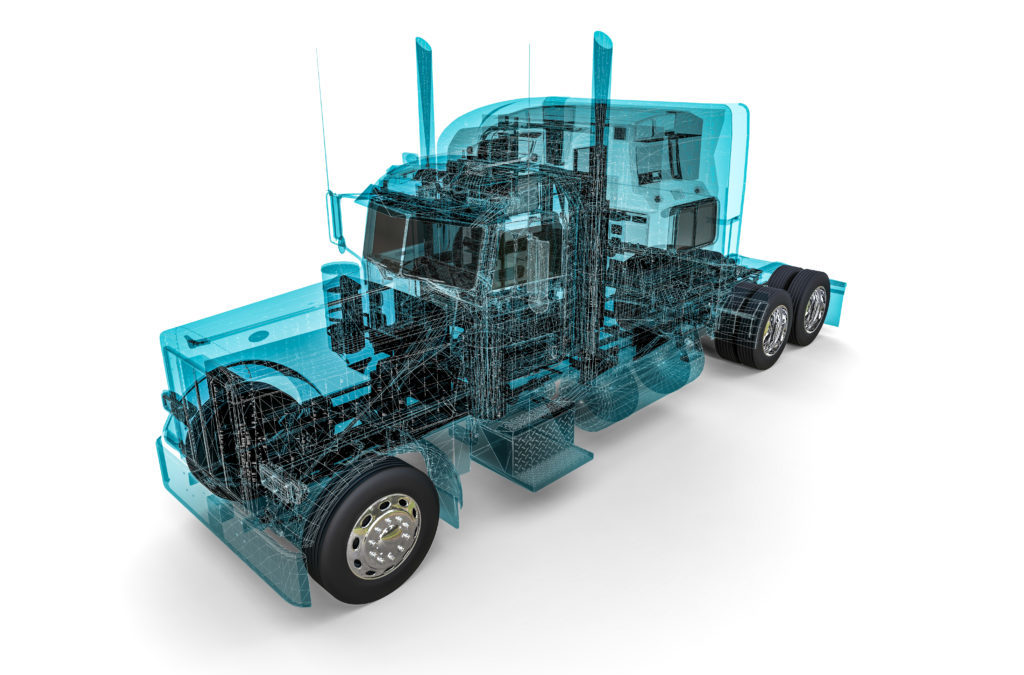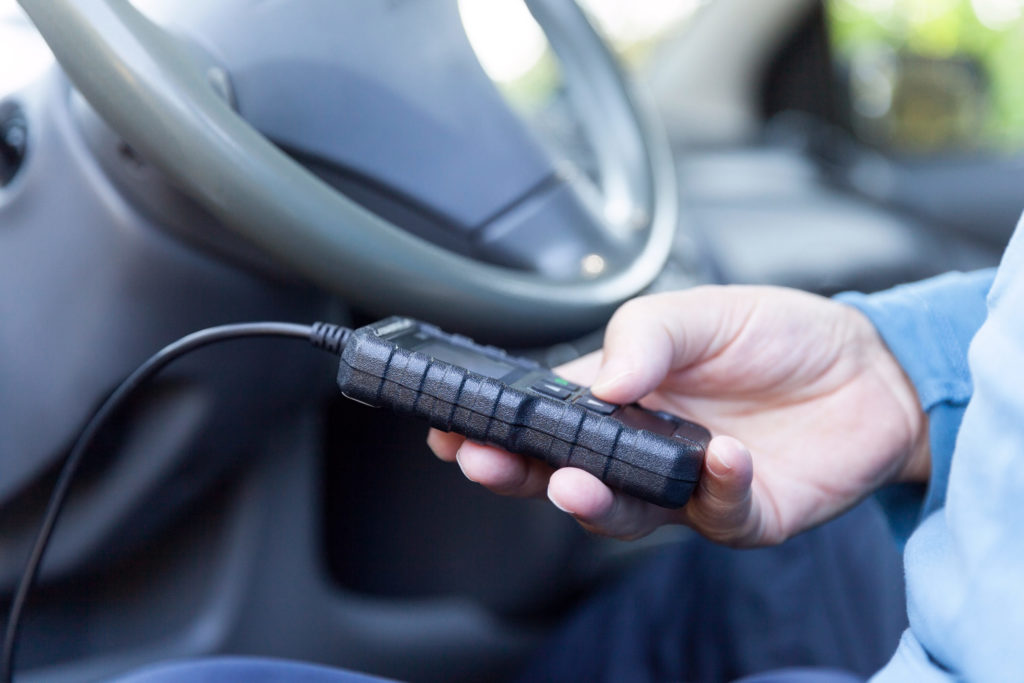Diagnostic trouble codes, also known as DTCs, are alerts from your truck’s electronic control modules (ECMs) that an issue exists. When a DTC becomes “active”, an indicator in your dash will illuminate so that the driver is aware. This light can look different depending on which ECM has the issue, such as the engine, ABS, transmission, and many other modules.
How Truck Fault Codes are Displayed
In today’s modern commercial trucks there are thousands of possible diagnostic fault codes that could occur. These codes can be displayed in many ways.
The first is your in-cab display. However, these codes often contain many acronyms such as SA, MID, SPN, FMI, and other jargon. We have a commercial truck jargon blog post that explains this more in-depth, but the short version is that these displays often don’t tell the entire information or “true” fault codes you need.
Another tool is using the electronic logging devices (ELDs) found in many over-the-road trucks. You can then view the diagnostic fault codes on your mobile device or through a website platform. However, these have the same issue as the in-cab displays, sometimes even worse since they don’t know how to read all the proper protocols and proprietary data on the commercial trucks. The ELD devices are not designed for diagnostics, so they should be treated as such.
We encourage users to use proper diagnostic tools to obtain proper diagnostic fault codes. Diesel Laptops sells a wide range of diagnostic tools that can guide you through the pros and cons of each tool.

From Fault Codes to Repair
Once you have your diagnostic fault codes, you can use Diesel Repair to find quick repair information for free. The repair information for these diagnostic fault codes includes the ability to search by generic fault codes or OEM fault codes. You will also receive information such:
1. Overview of the fault code
2. The component on the vehicle causing the problems
3. Symptoms the driver may observe
4. Conditions that need to be met for the fault code to be diagnosed
5. Systems of the vehicle affected
6. How to reset the fault code once the repairs are completed
7. Probable causes of repair
Note that when a fault code is active, you can not just reset or clear the fault code. It will come right back. You need to find the root cause and correct the problem. Sometimes the code will go inactive (and your dash light will turn off), but other times certain conditions need to be met or the diagnostic tools need to run reset commands.
How to Read OBD-II and J1939 Diagnostic Trouble Codes (DTCs)
OBD-II DTCs
OBD-II DTCs contain 5 digits, the first character indicates where the problem is occurring, and those digits are displayed as:
- P (powertrain) – includes the engine, transmission, and fuel systems
- C (chassis) – includes steering, suspension, and brakes
- B (body) – includes systems inside the vehicle, such as A/C
- U (network) – includes all onboard computer systems
The second digit of the DTC indicates whether or not the code is a standard or a manufacturer-specific code. The standard digit displayed is usually either 0 or 1, however, on rare occasions, the number “2” or “3” may appear.
- 0 indicates a standard code across all vehicles
- 1, 2, or 3 indicates a manufacturer-specific code, with 2 and 3 displaying in relatively rare occurrences
The third digit displayed out of the 5 digits indicates the subsystem:
The list below will inform you what each number means:
- 1 – issue with fuel or air metering
- 2 – issue with fuel or air metering
- 3 – issue with the ignition
- 4 – issue with the emissions system
- 5 – issue with vehicle control or speed
- 6 – issue with computer circuitry
- 7 – issue with the transmission
- 8- issue with the transmission
The fourth and fifth characters are read together as a two-digit number between 0 and 99 known as the specific fault index. These characters identify the exact issue of the vehicle. Check with your vehicle manufacturer or vehicle manual for explanations.
An example DTC would be read as “P-0-1-01”
Here is a list of common DTCs
- P0101 – A Mass Air Flow (MAF) circuit or sensor fault
- P0110 – An intake air temperature sensor circuit malfunction
- P0442 – A small system leak within the vehicle’s evaporative emission control system
- P0500 – A malfunction in the vehicle’s speed sensor
- P0606 – A PCM (or ECM) powertrain malfunction
- P0706 – A transmission range sensor circuit range fault
J1939 DTCs
J1939 codes contain 4 digits, with each digit representing a system that points you toward the specific problem for your vehicle.
This includes:
- Suspect Parameter Number (SPN) represents the overall system affected by the malfunction, which corresponds to a standard set of numbers.
- Failure Mode Identifier (FMI) represents the nature and type of the error.
- Occurrence Counter adds up the number of times this error occurs for every SPN.
- SPN Conversion Method (CM) represents the byte alignment for the DTC code.
Step-by-Step Repair Information for Diagnostic Fault Codes
We built Diesel Repair to help assist with diagnostic fault codes, along with all other information you need to properly repair a commercial truck. Diesel Repair is free to sign up for and use, and paid subscription plans include step-by-step repair information for diagnostic fault codes. Get started with Diesel Repair today!


